Pathological rashes of the human body #3: Slapped-cheek rashes
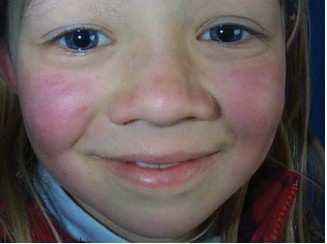
Hello Steemians,
Welcome to the third episode of our miniseries - a series where we discuss seemingly harmless yet conspicuous skin changes seen in diseases or conditions that poses risk of severe complications or even death to the people developing those skin changes.
In the previous two episodes, we have discussed about the Salmon pink rash (Seen in Juvenile Idiopathic Arthritis) and the Islands of white in a sea of red rash seen in Dengue Fever, both of which are debilitating condition with chronic morbidity and can complicate to death.
For today's episode, we're going to look at a skin changes that is not just very noticeable but it also looks like as if the child had been slapped in the cheek (hence the name), although some would think a blusher had been applied. As always, before we dive into the diagnosis, let's look at the rash first.
HOW IT LOOKS LIKE
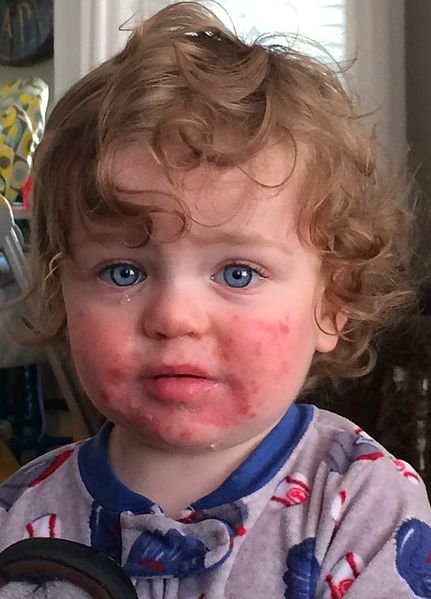
The scientific name of this disease is erythema infectiosum and it's actually just one of the many symptoms of the disease that we'll discuss later. This cheek rash usually occurs after the fever had subside with a relative pallor around the mouth sparing the forehead, mouth and the nasolabial folds. Although the striking rash here is the one on the cheeks, it's not the only rash expected to be seen in the patient - there can also be reticular rashes on the extremities or the trunk as seen in the picture below.
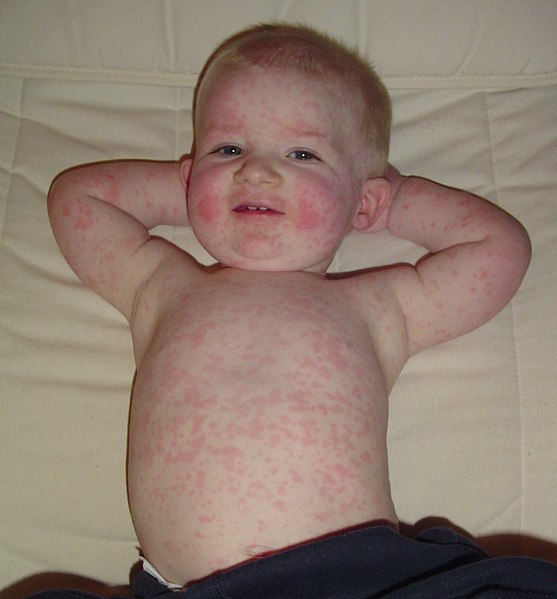
One more thing to note here is that for most patients, this rash can be exacerbated by exposure to sunlight or heat.
THE DISEASE
Now I know what you might be thinking - "Rashes on the cheeks and exacerbation following exposure to sunlight? This has got to be SLE (Systemic Lupus Erythematosus)"
Very good! In fact, if that's the only thing/symptoms being described to you, then an SLE guess isn't wrong at all but in this episode, we're not talking about SLE but rather a viral infection which, although shares some similar feature with SLE ( fever, joint pain, rashes on the face with exacerbation during slight) - there the similarities ends.
This disease has 4 different names - Yes, 4
Why four? Well, we got time so let's look at the list of names used to described this disease.
Parvovirus B19 infection - This is probably the most well-used name for this condition because it straight away goes to the etiological agent responsible for the development of this disease.
Slapped-cheek disease - I think we can all understand why it's being called as such because that's exactly how it looks like and this terminology was probably used to describe the disease in the early days and also in lay-man explanation.
Erythema infectiosum - I actually talked about this one earlier that it is actually the scientific name of the rash which is used to convey specific description of the rash amongst physicians. Although it is just one of the few clinical feature of the disease, it has been used interchangeably to both state the diagnosis and to state the skin changes.
Fifth disease - Probably the least obvious of names to describe the disease because it actually has a historical story to the naming. In the early days of viral exanthems, those working on describing maculopapular rashes of the human body such as measles, mumps and rubella, found a fifth maculopapular rash that was waiting to be described. Bearing a significant difference in terms of the features of the rash as well as the accompanying signs and symptoms from the other 4 rashes that had already been described, this 5th one was then called, pretty obviously, fifth disease.
TRANSMISSION
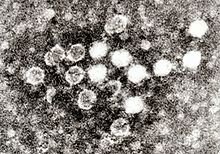
This virus is spread primarily from respiratory droplets from those infected by the virus. Those who are infected with the virus appears asymptomatic at first and this is the period when they are most infective and are able to spread the disease to others. It's worth mentioning here as well that since the virus is an Erythrovirus and therefore can be easily be found in the blood, blood-borne transmission isn't unlikely and has been reported as well.
DISEASE ENTITY AND PROGRESSION
The clinical features can vary greatly ranging from mild symptoms which can recover on its own, to the feared life-threatening ones and the greatest determinant of the clinical outcome of the patient is their immune status.
In a normal person with healthy immune status, infection starts with fever, progresses to rashes and joint pain after the fever had subside and they will outgrow the infection on their own, developing immunity to the infection in the process. While it's true they can get reinfection, such case is rare.
These are instances when Parvovirus B19 infection becomes life threatening:
In AIDS patients - The virus does two thing here - The first one is that because it is an Erythrovirus, it destroys the host's erythrocyte progenitor cells causing chronic anaemia or pure red cell aplasia and with it, comes the nasty complications associated with anameia; The second one is that it interferes with antiviral treatment in patients undergoing such treatment in cases of AIDS secondary to HIV infection.
In pregnancy - The threat here is more on the fetus as it can cause non-immune hydrops fetalis, leading to stillbirth or miscarriage especially when the infection sets in before week 20 of pregnancy (between week 14 to 20). The reason to why this happens has to do with the difference betwee fetal haemoglobin and adult haemoglobin. Fetal haemoglobin or HbF has a signifficantly shorter lifespan (70 days) compared its adult counterparts (120 days) and coupled with their immature immune system, makes them vulnerable to the induced-anaemia in a Parvovirus B19 infection.
In patients with underlying chronic haemolytic disroders - Conditions that shortens the life span of your red cells such as Sickle-cell anaemia, Hereditary spherocytosis, Thalassemia and many more, when being introduced to Parvovirus B19 infection, can complicate to an Aplastic crisis which means that the entire cells produced in the bone marrow are suppressed. This in turn leads to a state of dangerous vulnerability as lack of white cells makes the patient defenceless against infections and the massive drop in platelets mean that they could bleed spontaneously to death.
TREATMENT
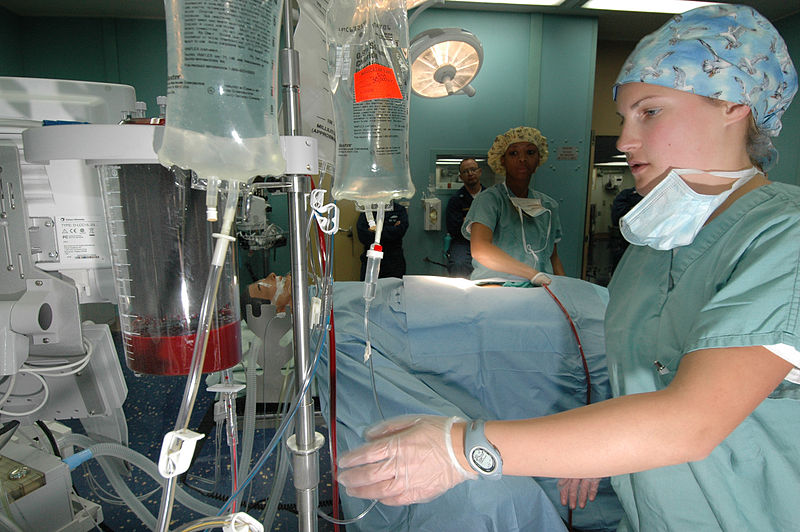
Currently there are no vaccines for the prevention of Parvovirus B19 infection. Treatment are based on the case and the presentation/clinical features of the patient. That said, there are no directed treatment for Parvovirus B19 infection and that the goals of management are aimed at controlling symptoms.
Joint pain and overall state of fever and feeling of unwell is managed with analgesics and acetaminophen respectively. Should patient be in a state of hypoperfusion or dehydrated, hydration strategies must be initiated dependent on the ability of the patient to tolerate orally or not.
In patients with transient aplastic crisis, blood transfusion is indicated to maintain a normal level of Haemoglobin. In pregnant women with Parvovirus infection, intrauterine transfusion will be performed while in patients with immunodeficiency, they'll be given intravenous immunoglobulin (Antibody) to help fight infection.
CONCLUSION
Slapped-cheek disease (or whichever of the 4 names you want to call it) is a condition caused by Parvovirus B19 infection that could potentially threaten the life of people around us especially those with immunodeficiency, chronic haemolytic disorders or pregnant women. Therefore, when seen the telltale signs of this condition, the person should be brought to medical attention immediately and be investigated vigilantly to help halt or neutralise the unwanted complications associated with this condition.
With that, we have come to the end of this episode, thank you for reading all the way till the end. Hopefully you managed to learn something from this post and if you did, be sure to smash the upvote button and follow me for more awesome content. Stay tune for the next episode in this miniseries and if you liked what you've just read, be sure to share it with your friends. If you want to read more on this topic, be sure to head down to the references below.
Just in case you haven't heard about this yet, it's MY BIRTHDAY TODAY (which has nothing to do with this episode, just thought you should know that, that's all) Haha
Thank you.
References:
Hi @thethinkingdr I just followed you, and please follow me back thanks!
Congratulations @thethinkingdr! You received a personal award!
Click here to view your Board
Do not miss the last post from @steemitboard:
Congratulations @thethinkingdr! You received a personal award!
You can view your badges on your Steem Board and compare to others on the Steem Ranking
Vote for @Steemitboard as a witness to get one more award and increased upvotes!